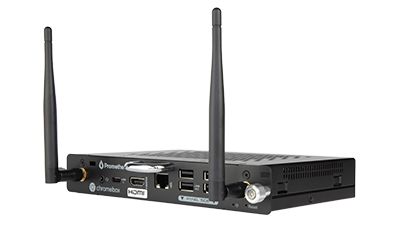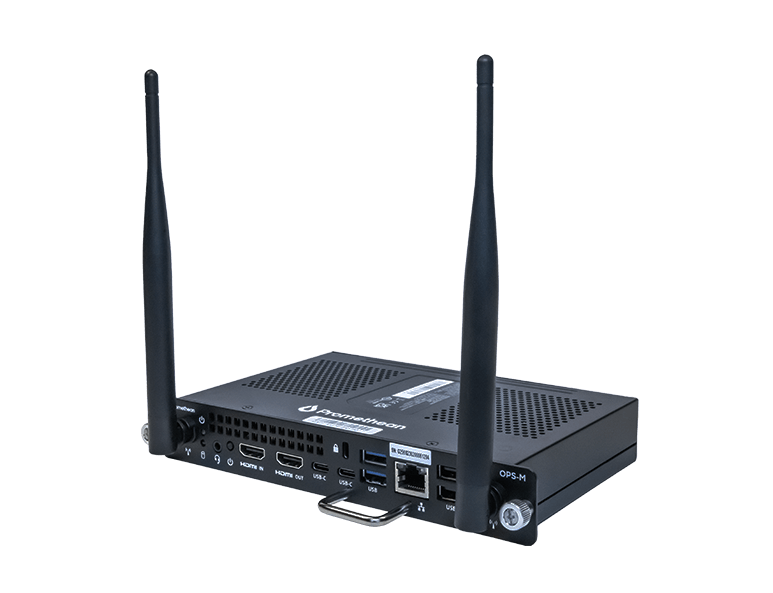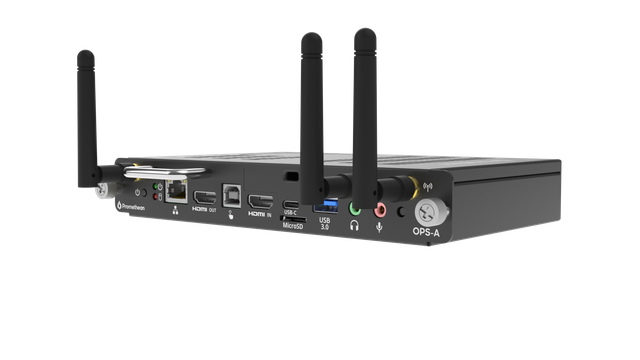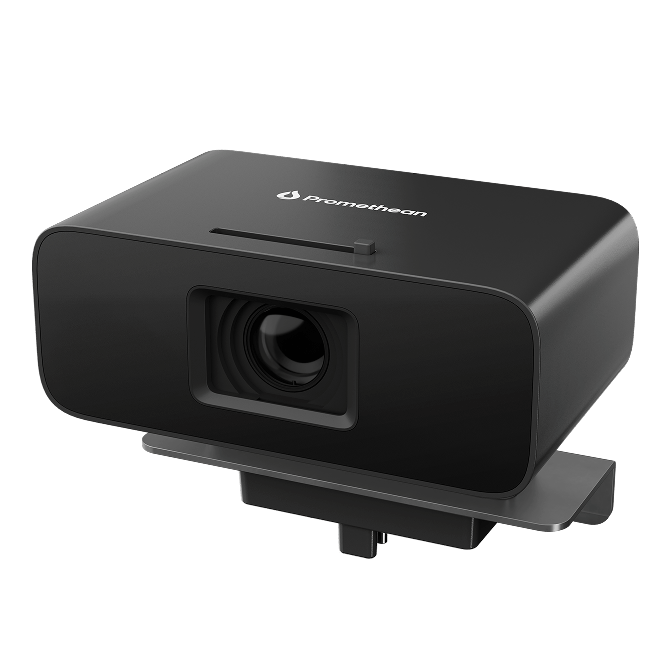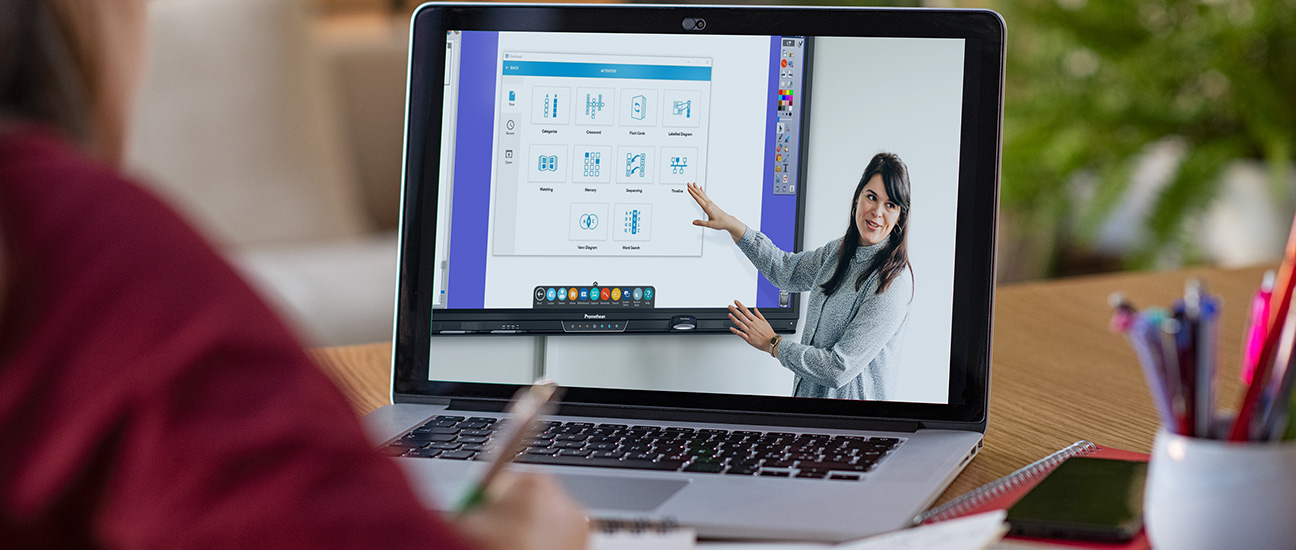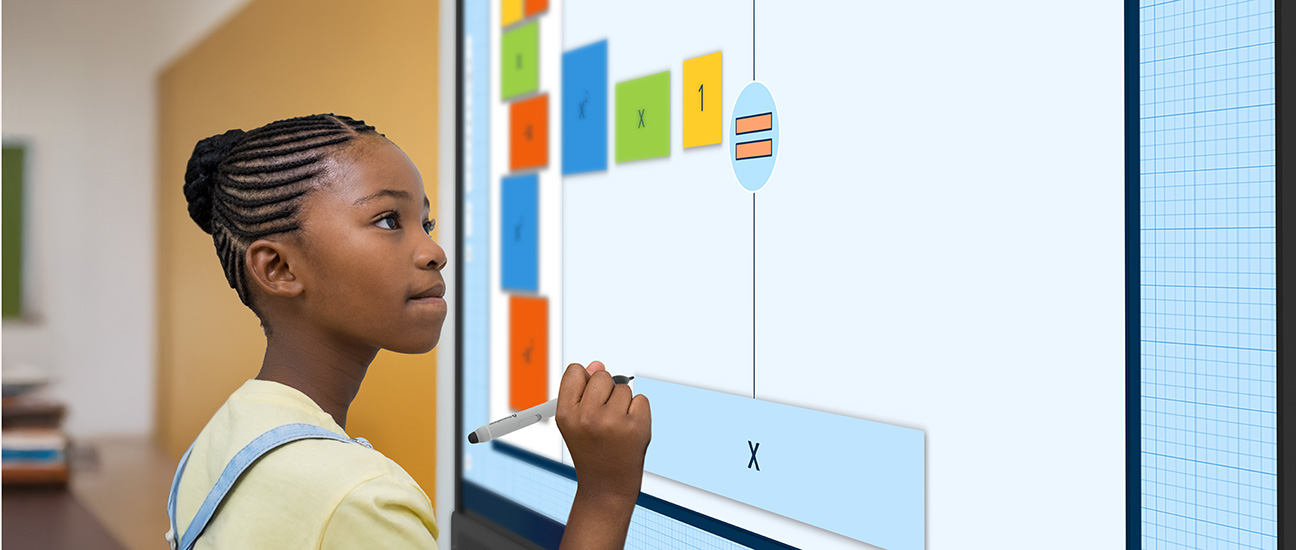Published on June 30th, 2025
Your ultimate guide: What is an interactive digital whiteboard?
15 minute read

Summary
What is a digital whiteboard?
At its core, a digital whiteboard is a large interactive display that allows you to write, draw, and collaborate electronically while easily integrating computers and internet resources. Unlike their analog counterparts, digital whiteboards feature touch-sensitive surfaces that respond to multiple inputs, creating an intuitive and responsive user experience. The physical components typically include:
- A large display screen (ranging from 55 inches to over 85 inches diagonally)
- A touch-sensitive surface utilizing infrared, capacitive, or resistive touch technology
- Multiple connectivity ports for computers, tablets, and other devices
- Processing and specialized software capabilities
- You can interact with these boards through various methods, including stylus pens for precise annotation, finger touch for natural navigation, and in some models, voice commands. This flexibility transforms digital whiteboards into accessible tools for users with different preferences, abilities, and technical comfort levels.
Key features of interactive digital whiteboards
1. Real-time collaboration
Digital whiteboards excel at breaking down barriers to effective teamwork. Modern boards support multiple touch points—often 20 or more—enabling several users to interact with content simultaneously. This multi-user functionality creates natural collaboration opportunities that simply aren’t possible with traditional presentation tools.
The collaborative power extends beyond in-person settings through features designed specifically for today’s hybrid and remote work environments:
- Integration with video conferencing platforms like Zoom, Microsoft Teams, and Google Meet
- Screen sharing capabilities that ensure everyone sees the same content in real-time
- Cloud-based collaboration tools that allow participants to contribute regardless of location
- Session recording options that capture both visual content and discussions
These features ensure that distance no longer limits effective collaboration, making digital whiteboards essential tools for organizations embracing flexible work models.
2. Multimedia integration
Perhaps the most transformative aspect of digital whiteboards is their ability to incorporate and interact with diverse media types. Unlike traditional boards limited to what can be drawn on them, digital whiteboards serve as windows to virtually any digital content.
You can easily display and annotate:
- Video files in various formats (MP4, AVI, MOV)
- High-resolution images and graphics
- Interactive web applications and websites
- Documents, spreadsheets, and presentations
The ability to annotate directly over these media types creates powerful teaching and presentation opportunities. Imagine pausing a video to highlight key elements, annotating a complex diagram during a meeting, or collaboratively editing a document in real-time. These capabilities transform passive content consumption into active engagement, whether you’re delivering a lesson to students or presenting quarterly results to stakeholders.
3. Save and share capabilities
One of the most practical advantages that interactive digital whiteboards offer over traditional boards is content persistence. Rather than taking photos of whiteboards before erasing them, digital whiteboard content can be saved with a simple tap.
These boards support various file formats, including:
- PDF for universal compatibility
- JPEG and PNG for image-based sharing
- Proprietary formats that preserve interactive elements for future sessions
Cloud integration takes this functionality further, with most digital whiteboards connecting to platforms like Google Drive, Microsoft OneDrive, and Dropbox. This integration means your work is automatically backed up and easily shared with participants who couldn’t attend or need reference materials later.
The ability to revisit and build upon previous sessions creates valuable continuity for ongoing projects, curriculum development, and training programs. Teachers can refer back to previous lessons, meeting facilitators can track progress over time, and teams can maintain context between collaborative sessions.
4. Input flexibility
Digital whiteboards accommodate diverse interaction styles to suit different users and scenarios. This flexibility makes them accessible to everyone from tech-savvy digital natives to those who prefer more traditional approaches.
Modern boards support:
- Stylus input for precise writing and drawing
- Finger touch for intuitive navigation and manipulation
- Multi-touch gestures like pinching, zooming, and rotating
- Connection to external devices like keyboards, mice, and tablets
The multi-touch capabilities of today’s digital whiteboards enable rich interactions with content. You can manipulate objects naturally, with multiple people working simultaneously without awkward turn-taking or device passing. This creates a more fluid, engaging experience, whether you’re brainstorming ideas or explaining complex concepts.
Educational applications of digital whiteboards
Digital whiteboards have transformed education at all levels through increased engagement, visual representation of concepts, and collaborative opportunities.
What is a digital whiteboard used for in K-12 classrooms?
In primary and secondary education, digital whiteboards have become essential tools for creating dynamic, interactive learning environments. They support teachers in delivering differentiated instruction that accommodates various learning styles while enabling real-time feedback and assessment.
These versatile displays support diverse teaching approaches, including:
- Visual learning through dynamic graphics and videos
- Gamified activities that increase student engagement and motivation
- Collaborative exercises where multiple students contribute simultaneously
- Differentiated instruction that addresses various learning needs
In practice, K-12 educators use digital whiteboards for:
- Interactive lessons where students manipulate digital objects to demonstrate understanding
- Group projects where teams collaborate on a shared canvas
- Engaging quizzes and polls that provide immediate feedback
- Virtual field trips that bring distant locations and experiences into the classroom
These applications make abstract concepts more concrete and provide opportunities for students to actively participate in their learning rather than passively receiving information.
What is a digital whiteboard used for in higher education?
College and university instructors utilize digital whiteboards in ways that reflect the unique demands of higher education environments. These tools integrate with campus learning management systems like Blackboard, Canvas, and Moodle to create smooth digital learning experiences.
In higher education settings, digital whiteboards facilitate:
- Dynamic lectures where instructors annotate complex diagrams or equations in real-time
- Collaborative research projects where teams visualize and manipulate data together
- Virtual office hours connecting professors with students regardless of physical location
- Student presentations that incorporate multimedia elements and interactive components
The ability to capture lecture content and share it with students afterward is particularly valuable in higher education, where complex material often benefits from repeated review. This feature supports diverse learning needs and accommodates students who may need to revisit material at their own pace.
Digital whiteboards in higher education support sophisticated applications like interactive case studies, complex data visualization, and integration with specialized software relevant to particular fields of study. These capabilities help prepare students for professional environments where similar technologies are increasingly common.
Business and government applications of digital whiteboards
Beyond educational settings, digital whiteboards have become essential productivity tools in business and government organizations, supporting collaboration, communication, and decision-making processes.
What is a digital whiteboard used for in the workplace?
Today’s workplaces demand flexibility, with teams often split between office locations or working remotely. Digital whiteboards bridge these gaps by enabling real-time collaboration regardless of physical location. They integrate smoothly with video conferencing platforms, ensuring that remote team members can participate fully in discussions and brainstorming sessions.
In business environments, digital whiteboards enhance meetings through:
- Live annotation capabilities that capture ideas and action items in real-time
- Interactive presentations that allow for dynamic responses to questions
- Collaborative problem-solving sessions where multiple perspectives can be visualized
- Agile planning activities with digital sticky notes and organization tools
These versatile tools integrate with enterprise software commonly used in business settings, including Microsoft Teams, Zoom, and Google Workspace. This compatibility allows organizations to incorporate digital whiteboards into their existing technology ecosystem without disrupting established workflows or requiring extensive training.
What is a digital whiteboard used for in government and public service sectors?
Government agencies and public service organizations increasingly rely on digital whiteboards for planning, training, and community engagement activities. These tools are particularly valuable in scenarios requiring collaborative decision-making and clear communication of complex information to diverse stakeholders.
Public sector implementations of digital whiteboards include:
- Departmental planning sessions where multiple stakeholders contribute to strategy development
- Civic engagement meetings where officials can present plans and gather feedback interactively
- Training workshops for government employees across multiple locations
- Emergency response coordination requiring real-time information sharing
- Public information sessions with interactive maps and data visualization
Digital whiteboards have easy interfaces that work with the technology and software organizations already use and create more efficient systems that prioritize speed, action, and security.
Choosing the right digital whiteboard
The appropriate choice of digital whiteboard for your organization depends on your specific needs, environment, and existing technology infrastructure.
Key selection criteria include:
- Screen size, which should match room dimensions and typical viewing distance
- Touch sensitivity and response time for a natural writing experience
- Software compatibility with your existing systems and applications
- Connectivity options for various devices your team uses
- Resolution and display quality appropriate for your content needs
- Durability and warranty coverage for your usage environment
When evaluating options, certain features should be considered essential:
- Reliable touch sensitivity that works consistently
- Good display quality with appropriate brightness for your space
- Basic connectivity options including HDMI and USB
- Intuitive interface that requires minimal training
Other features might be optional depending on your specific needs:
- Advanced software integrations for specialized applications
- Remote management capabilities for IT departments
- Built-in computing vs. connecting to external devices
- Specialized educational or business software
Before making a purchase, ask vendors these important questions:
- What warranty coverage is included, and what are the terms?
- What support services are available, and how quickly can you respond to issues?
- How frequently is the software updated, and what is the update process?
- How does your solution integrate with our existing hardware and software?
- What training resources are available for our team?
Understanding these aspects before purchase can prevent costly mistakes and ensure you select a solution that will serve your organization’s needs effectively for years to come.
Overcoming digital whiteboard implementation challenges
Despite their benefits, organizations often encounter obstacles when adopting digital whiteboard technology. Recognizing these challenges in advance can help you develop strategies to address them proactively.
Common adoption challenges include:
- Budget constraints, especially for educational institutions with limited funding
- Training requirements for staff unfamiliar with the technology
- Resistance to change from team members comfortable with existing methods
- Physical space limitations that may affect installation options
- Concerns about technology reliability and support needs
Technical challenges may also arise:
- Software compatibility issues with existing systems
- Network infrastructure limitations affecting performance
- Learning curves associated with new interfaces and workflows
- Integration with legacy systems and content
Fortunately, practical solutions exist for each of these challenges:
- Vendor support services can address technical issues and provide implementation guidance
- Professional development sessions build user confidence and demonstrate practical applications
- Phased implementation approaches allow organizations to spread costs over time
- Peer mentoring programs leverage early adopters to support colleagues
- Grant funding opportunities can help educational institutions overcome budget constraints
The key to successful implementation is recognizing that technology adoption is as much about people as it is about the technology itself. Taking time to build buy-in, provide adequate training, and demonstrate practical benefits will significantly increase adoption rates and overall satisfaction.
Promethean’s interactive digital whiteboard solutions
Promethean offers advanced digital whiteboard products designed specifically for educational and professional environments. Our ActivPanel solution features intuitive interfaces, strong connectivity options, and purpose-built software that enhances collaboration and engagement.
To support successful implementation, we provide comprehensive resources:
- Technical support from knowledgeable specialists
- Training resources tailored to different user roles and experience levels
- Professional development options including workshops and certification programs
- Implementation planning assistance to ensure smooth deployment
Transforming collaboration with digital whiteboards
Digital whiteboards represent a significant advancement in how we share information, teach concepts, and collaborate on ideas. By combining the intuitive nature of traditional whiteboards with powerful digital capabilities, these interactive displays enhance engagement, streamline workflows, and support diverse learning and communication styles.
Whether in a classroom, boardroom, or government office, digital whiteboards offer tangible benefits that improve outcomes and experiences for all participants.
Request a demo today to see how Promethean’s digital whiteboard solutions can transform collaboration in your organization.










